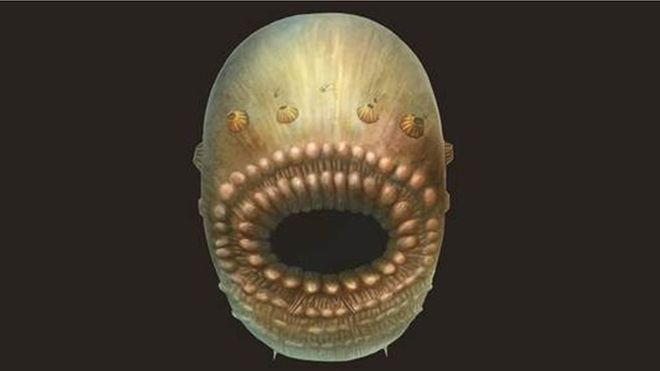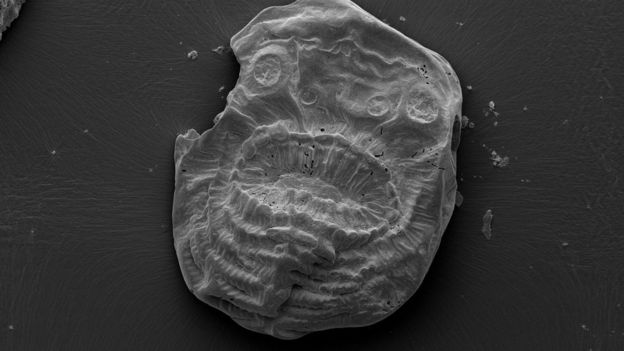The fossil is about 540 million years old.

Cambridge UniversityAn artist’s drawing of the Saccorhytus.
Feast your eyes on your great-great-great-great-times-about-540-million, grandparent.
It’s a millimeter-sized, anus-lacking blob that mostly consisted of a giant mouth — and it’s said to be the “oldest human ancestor.”
The Saccorhytus was a tiny sea creature that lived between grains of sand in the ancient oceans. It had a bag-like, vaguely symmetrical body covered in muscles and thin skin, and a big mouth surrounded by four tiny cones. Fossilized traces of it were recently uncovered in China, along with remains of 45 other creatures that shed new light on human’s evolutionary roots, according to a report released Monday in the journal Nature.
“To the naked eye, the fossils we studied look like tiny black grains,” Professor Simon Conway Morris, a member of the research team, told the BBC News. “But under the microscope the level of detail was jaw-dropping.”
Don’t see the family resemblance? The connection can be traced back to when there were two main groups of organisms: deuterostomes and protostomes.
Deuterostomes, meaning “mouth second,” were originally believed to develop their anus before their mouth in the embryo. It was this group that eventually developed into vertebrates (animals with spines). Before now, the earliest known deuterostomes were from 510 to 520 million years ago. The new creature lived 540 million years ago, filling in an important gap in evolutionary research.
“All deuterostomes had a common ancestor, and we think that is what we are looking at here,” Morris said.
Interestingly, these new fossils don’t seem to have anuses — leading researchers to believe the Saccorhytus used small cones surrounding the mouth for – ehrm – “excavation.” The cones also might be the earliest version of gills.
It’s not the oldest animal fossil to ever be discovered, but it is the oldest that can be linked to humans. You know how your body is relatively symmetrical? You got that from Saccorhytus.

Northwest University, ChinaThe newly discovered Saccorhytus fossil.
Next, read about the Pacific Islanders who have DNA not linked to any known human ancestor. Then check out what humans looked like 9,500 years ago.





